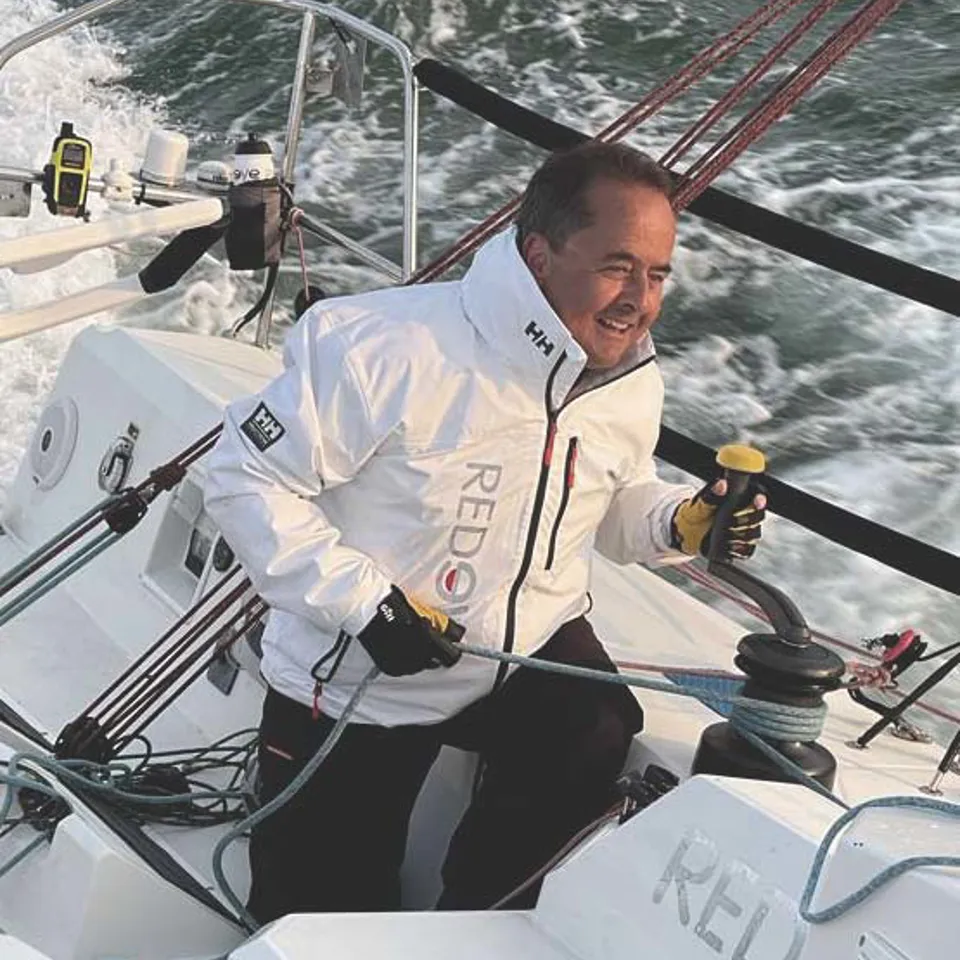How technology is driving decarbonisation in recreational maritime
20 Feb 2024
ICOMIA and Ricardo have published a new study on the opportunities for decarbonising recreational maritime.
The maritime sector is responsible for around 3% of global greenhouse gas (GHG) emissions, largely due to the combustion of heavy fuel oil to power commercial and larger passenger ships, such as cruise liners.
By comparison, recreational boats – such as those used for fishing, watersports and pleasure cruising - account for less than 0.1% of GHG emissions. Yet key stakeholders, organisations and users are aware of their part to play in the decarbonisation of the industry.
Technology, including sustainable marine fuels, is likely to be critical to this journey. Leading the discussion around this topic is ICOMIA, the International Council of Marine Industry Associations, who last year, following support from Ricardo, launched a new research report, ‘Pathways to Propulsion Decarbonisation for the Recreational Marine Industry’.
We caught up with Joe Lynch, CEO of ICOMIA and Albert Zenié, a senior consultant at Ricardo who helped to deliver the report, to find out more.
First, tell us about ICOMIA and its role in the industry?
Joe Lynch: “The easiest way to summarise ICOMIA is that we’re the global voice of the recreational marine industry. We work with our members, including marine industry associations, globally, to listen and understand what is really important to them. We are in the privileged position of being the network that connects our members, providing them with a global picture, keeping them informed. We’re technology agnostic, we don’t sell boats, or engines. We operate as an independent adviser.”
“We’re the go-to for government bodies who want support and advice to develop their regulatory or policy frameworks. We’re able to share best practice as a result of having a network of global associations. Our impartiality, means we’re able to provide insights and information to policy makers, without them feeling we are pushing a particular agenda, which is hugely important.”
“We have an innate passion and desire to drive the industry forward, and it’s our responsibility to focus on making the recreational marine industry safe, successful and sustainable. Yet, sustainability isn’t just about the impact on the environment, it’s also about creating sustainable business models.”
Joe Lynch
Chief Executive Officer of ICOMIA

What’s the story behind the new report, Pathways to Propulsion Decarbonisation for the Recreational Marine Industry?
JL: “The report has been very well received – particularly among policy makers. It provides the latest impartial, scientifically derived data and it will enable people to make sensible decisions. It specifically looks at marine propulsion in boats under 24m in length and reveals that due to the unique on-water environment for recreational boats, the varied interest of boaters, and the experience they seek, a variety of solutions must be considered to continue reducing their emissions.”
Albert Zenié: “We were delighted to deliver this first-of-a-kind report, having been commissioned by ICOMIA to investigate propulsion technologies across nine common recreational craft and to compare the impact of lifetime GHG emissions, financial costs, usability, performance, range and infrastructure implications.”
AZ: “The propulsion technologies investigated included: battery electric (electric-powered boats and watercraft); hybrid electric (internal combustion engines using liquid fuel and electric); hydrogen (internal combustion engines or fuel cell); internal combustion engines with sustainable marine fuels (sustainably produced liquid substitute for conventional fossil fuel); and internal combustion engines with gasoline or diesel.”
AZ: “The report provides guidance to global governments and boating industry stakeholders as they work together to shape investments in technology and policy. We found during our analysis that recreational boats are considerably different, as unlike automobiles for example, which are relied upon for daily commuting, they are only used on average 35 to 48 hours per year. The research also looked at the impact on the total cost of ownership based on propulsion technology. Compared to boats on the water today, it’s expected that the total cost of ownership will rise, from between 5% to 250% until alternatives achieve market scale.”
AZ: “Ricardo is already working with a number of customers in the commercial marine sector, to advise them on future propulsion technologies and deliver integrated solutions, including bespoke hydrogen, multi-stack, single balance of plant fuel cell systems. So this was a great opportunity to examine how different types of technology and propulsion system have the potential to decarbonise the recreational boat industry and shape its future. It’s clear there is no universal ‘one size fits all’ approach, but this research paves the way for the recreational boating industry to begin the necessary education to help further reduce carbon emissions.”
What are the main things people are talking about – how are conversations shaping up?
JL: “There’s been increased awareness of the implications of not doing enough. The Paris Agreement says that GHG emissions need to peak before 2025 and then decline by 43% by 2030. For ICOMIA and our members, we’re in a slightly unusual position in that collectively, we account for a very small percentage of GHG emissions. But it’s not our style to say it’s someone else’s problem. No-one can bury their head in the sand and look to others to fix things. We need to be part of the solution, as the overall impact is considerable on the places we love and cherish and the environments where we go boating.”
JL: “We have an innate passion and desire to drive the industry forward, and it’s our responsibility to focus on making the recreational marine industry safe, successful and sustainable. Yet, sustainability isn’t just about the impact on the environment, it’s also about creating sustainable business models.”
JL: “There’s a drive towards decarbonisation to minimise our impact on the environment, but it’s just one of the main agenda items. Sustainability needs to be reflected in people policies and employment, and in supporting the place where we work to control pollutants, emissions, noise, vibration among other things. Decarbonisation is very prominent and represents one of the most urgent challenges.”
How do we go about finding solutions to those challenges?
JL: “One of the challenges we all face is making decisions based on facts and data. This is core to ICOMIA’s principles and one of the reasons we decided to commission the report.”
JL: “The vast majority of people work with the very best intentions, but making the right decision is complicated. This report has demonstrated that our sector is unique and very complicated, so the big challenge for us is to help people make more informed decisions. Once we’ve achieved this the future challenge is to lobby hard to make the right environment for innovations in our industry to thrive.”
JL: “We want to encourage a continued focus on R&D, as there’s so many exciting innovations in our industry at the moment covering propulsion technologies, hull design, sustainable boat building, friction reduction and autonomy and remote operating systems. The next step is demonstrating the extent of customer demand for these new technologies, so that governments, regional bodies and suppliers realise that there’s an attractive market for them.”
“It’s clear there is no universal ‘one size fits all’ approach, but this research paves the way for the recreational boating industry to begin the necessary education to help further reduce carbon emissions”
Albert Zenié
Senior Consultant, Ricardo

Do you think consumer demand for innovation in the industry will be the key to decarbonisation?
JL: “Definitely. Research shows that sustainably produced drop in liquid marine fuels would make a huge difference to an existing fleet immediately. It would be one of the most effective ways to decarbonise our industry. The technology and the desire is there, now we need to focus on the infrastructure to ensure reliable delivery to the end user.
JL: “We need to demonstrate to the industry that if you can make it easy to access sustainable fuels, make the supply chain better, consumers will buy it. That’s a key part of our campaign to demonstrate how attractive this market is and how the demand is there. At the moment it’s a bit chicken and egg. Which comes first? But if there’s increased consumer demand, suppliers will realise and infrastructure will be put in place.”
How important is it that organisations such as ICOMIA work with governing besides, key stakeholders and those in commercial marine to share best practice across the wider marine sector?
JL: “It’s absolutely critical. Although the report also highlights that the recreational marine industry is very different in terms of the types of technologies and use cases that will be most effective, when compared to the commercial marine sector. What works for one, could be entirely different for privately owned pleasure boating and the leisure boating industry.”
JL: “It’s really important that we work with governing bodies at an infrastructure level to create materials to support investment in areas such as sustainable fuels, hydrogen technology and electrification. By doing this we hope to drive awareness of the correct solution among consumers, who will then drive demand. If the supply isn’t there, people will get frustrated, and it will be a barrier to change.”
JL: “What this research helps people understand is that a privately owned boat that’s used for a couple of hours every other weekend in the summer has a completely different carbon profile to a harbour ferry that runs 365 days of the year. We’ve got to be very careful that we don’t make the same assumptions that what works in the commercial world is applicable to the leisure marine sector – that’s a really fascinating conversation.”
AZ: “Ricardo provided expertise in low carbon propulsion technologies and vast lifecycle analysis experience, which allowed ICOMIA to produce findings respected globally by the industry and policy makers. This was a very fulfilling project to work on as it enabled the team to paint a comprehensive picture, with in-depth analysis to guide its decarbonisation efforts.
What key innovations are you seeing in your industry?
JL: “We’re seeing some really exciting innovations around friction and propulsion technologies, that’s why we’ve called our campaign 'propelling our future' so we can talk about the different pathways to decarbonisation - although propulsion systems and fuel types are just one of the pathways. There are some tremendous leaps and bounds being made in the field of electric propulsion, which are incredibly exciting. Foiling technologies that reduce friction are also coming along very quickly and that’s a great way to reduce fuel consumption if you have a boat running on foils.”
What are the next steps?
JL: “Pathways that explore the full lifecycle analysis of the vessel itself, from the cradle to the grave, from design, the materials being used to build the boat, to end-of-life treatment, are being examined, as well as pathways to alternative propulsion technologies, such as hybrid.”
JL: “It’s important that we continue to look at different computations, particularly new fuel technologies such as hydrogen, and explore different opportunities to research this activity. To reiterate what I said before, it’s about helping people to make informed decisions.”
How do you ensure that these recommendations come alive and are picked up as widely as possible?
JL: “Launching the report is the first step but we can’t assume everyone has received it and understood its findings. It’s important that we continue to promote the message, whether that’s through trade shows, webinars, or other activities.”
JL: “ICOMIA doesn’t have a huge extended audience but we do have members who have a global reach. So we will continue to share this work with our members so they can pass the message on to consumers, suppliers and all those working in the recreational boating industry.”
JL: “It’s important that we recognise the partners who have helped us to get to this point, including Ricardo, and our members. Particular thanks go to the members of the ICOMIA Marine Engine Committee who supported this research both financially and with their tremendous technical knowledge and insight. They’ve enabled us to create a thorough piece of work. The fact that we’ve engaged Ricardo to create an independently verified peer reviewed report, following the ISO process, has meant that we’re not confrontational. The report is based on scientific data and it’s giving people information that they are really hungry for.”
JL: “One of the benefits of ICOMIA being a global organisation is that we see the industry in different phases of development. In some parts of the world the market is very mature, whereas elsewhere the pace of innovation and change is accelerating enormously quickly. In some cases, we are trying to influence change in an already established market, in others we’re trying to offer direction to a rapidly emerging market, to make the changes early and make a bigger impact in the longer term. We’ll continue to be visible at industry events, engaging with boating industry consumers as well as governments and policy makers.”
JL: “It’s a really interesting time to be involved in the recreational boating industry, we’re excited to see what the future brings and how we can influence it.”




 Follow Ricardo plc for regular updates
Follow Ricardo plc for regular updates




